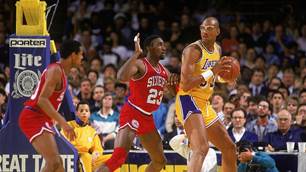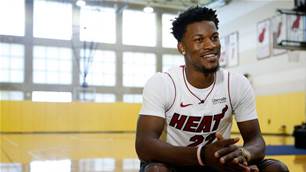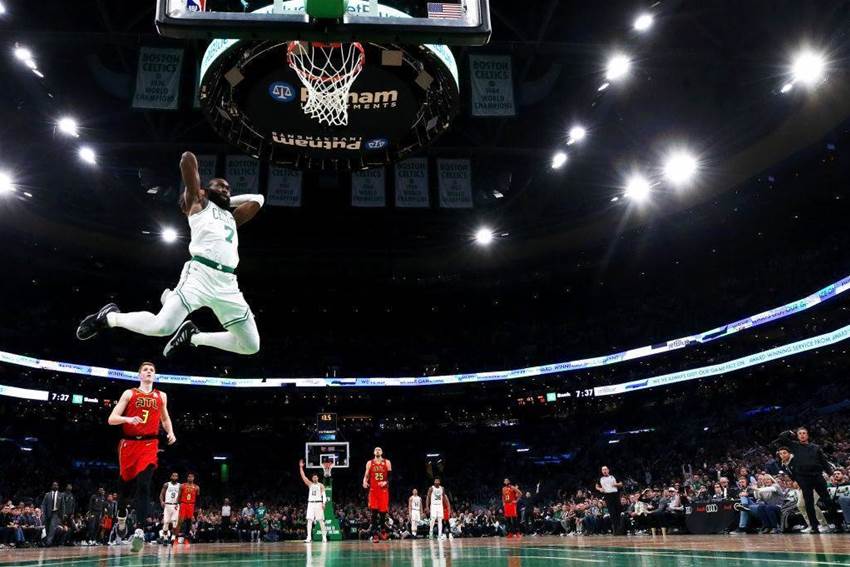Welcome to the new NBA decade. We've had a look back at the previous decade, but now that all of that nostalgia is out of the way, how about we look forward.
The NBA will expand. Again.
The last time the NBA expanded was in 2004, when the Bobcats joined the league. At some point this decade, expect the NBA to expand once more.
Of course, the owners would be slicing the revenue pie a little thinner, but a pair of new teams would increase revenue. With the sharp rise in the value of an NBA franchise over the past decade to an average of $1.9 billion from just under $800 million, the expansion fees that the league could command this decade would be astronomical. That should allay any concerns about revenue sharing.
So where to expand? In the West, the obvious answer is Seattle. And why not bring back the Sonics name? If we can bring back the Hornets, even though the Hornets are actually the Pelicans, then why not reanimate the Sonics. Of course, Las Vegas looms.
It's long been presumed that the NBA will expand into Las Vegas, especially given the success of the Raiders and Golden Knights. There is a chance that Vegas and Seattle are the next expansion teams, though that would necessitate a Western Conference team moving to the East.
Perhaps the league just looks East instead? Although a location is not as clear cut. There are some markets that are clearly big enough to support a team: Tampa, Columbus, Jacksonville, Louisville and Cincinnati to name but a few.
The NBA isn't afraid of a smaller market (Hello, OKC!) so market size may not matter. Louisville and Cincinnati have perhaps the most prominent basketball culture.
The next CBA will try to counter the Super Teams.
Adam Silver has from time to time lamented the 'Super team' era. He's advocated for the more organic team building of, say, the Warriors of early last decade as opposed to, picking a situation at random, the Warriors adding Kevin Durant.
Expect the concept of super teams and specifically free agency to be front and centre when the next negotiations come around in a few years time.
Will that mean longer contracts to tie players to their teams and allow a more natural team building experience? Perhaps, although that would go against the player power era that we've just lived through. But next to freedom of movement, what do the players value most? Money!
Given the rise in franchise values, and the players acute awareness of their own role in increasing those values, does the Players Union look to try to negotiate a percentage of franchise sales that go back to the players? Do they negotiate a larger slice of the revenue pie? I think it will be the former.
A severe reduction in public funding for new arenas.
Given the rise in the value of NBA franchises, and in turn increase in the wealth of the new batch of NBA owners from the local exceedingly wealthy man, to Forbes listed 'holy hell this bloke has a lot of money' wealthy, why do local communities need to continue to fund NBA arenas to the point that they currently do.
Most new arenas for professional sporting teams in the 4 major US leagues are funded to between 70% and 80% by civic means. When your owner is a Herb Kohl or a Gordon Gund, then funding a half a billion dollar stadium for a team worth less than that, completely out of the owners pocket is out the question. These days, ownership groups are made up of multiple billionaires – money isn't an object to these people.
Of course, stadiums are not just used for sport. There remains a civic use element for every stadium, so there should be an element of public ownership. When you look at positive effect a stadium can have on the surrounding downtown, you can't deny that there is a constructive public benefit.
However the owners are richer than ever. The numbers have changed. and I expect that the calculus regarding stadium funding will change with it.
TV ratings will continue to decline.
Despite the league's continued growth in popularity throughout the US and globally, the leagues TV ratings continue to decline. The last Finals alone were down 14% .No one is completely sure as to why, though there are theories.
Is it the fact that the games are generally available on cable, with the league being effected the cable cutting trend? Is the load management phenomenon, and the resulting games missed by the bigger stars, causing people to turn away? Is it the fact that the NBA is available on so many other platforms now? Is League Pass taking away eyes and negatively impacting TV ratings?
Realistically, it's a mixture of all of these, with plenty of other factors throw in. But without a clear indication of what it is that's causing the problem, there can't be a clear solution. For that reason, TV ratings will continue to decline.
Becky Hammon will be the next coach of the Spurs.
Gregg Popovich has been the Head Coach of the Spurs since since 1996. He turns 71 years old this month. The clock is clearly ticking, but this being the Spurs, they surely have a succession plan.
Many assumed that Tim Duncan joining the coaching staff was a sign that the former legend is to be groomed as Pop's successor. But ask yourself, can you really see Timmeh as an NBA Head Coach?
The Spurs are one of the most progressive franchises in the most progressive league in US sports. Would it surprise anyone if Becky Hammon succeeds Coach Pop? The former WNBA All Star is a San Antonio legend in her own right, having her #25 retired by the San Antonio Stars.
She is very well regarded in the basketball world, and this is her 6th season on the Spurs bench.
Let's say Pop retires after the 2021 season. The Spurs, who value institutional knowledge more than most clubs, would surely look within for their next leader. Step forward, the NBA's first female coach.
The 3 point line will move & court will move to accommodate it.
Kirk Goldsberry has been an advocate for moving the 3 point line back for many seasons. He has talked about eliminating the short corner 3 and/or extending out the line above the break. With the amount of deep 3's being made these days, a longer line wouldn't prove to be the hindrance that many might imagine. But what of the corner 3? If you make all 3 pointers a consistent length, you take away the ability to just stand in the corner, due to the limited space.
I think there will be a compromise. The 3 point line will be moved outward – from 23.75 feet to something like 24.75 - and that the short corner 3 will remain. However, the new corner 3 will be 23.75 feet from the basket, not the current 22 feet. That will necessitate the widening of the court, which will be the single biggest change in the sport this decade.
Such a drastic change will have to be a gradual thing. Even if it's just to save Charles Barkley from having an on air coronary. Look for this to be announced a good 12 months out, experimented with in the G-League, then preseason games. If it creates space, and therefore creates offense, then it'll stick.
Post play will make a return.
So now that we have a bigger court to accommodate our ever growing athletes, what to do with all that space? The deep 3 will of course remain, and all that extra space should create some cavernous driving lanes. However I think there will be one fading element of the game that will find it's renaissance on our new NBA floor – the post up.
If Sir Charles survived his heart attack from the previous section, he'll be delighted. BUT!!!! This is not the traditional post play of the days of yore, folks. The NBA just doesn't contain an Olajuwon or a Kevin McHale these days. It doesn't even really have a Shaq to simply bulldoze everybody in his path. No, the post up artist of the 2020's will be the guard.
The little man will be able to dictate the game from the block or the elbow, utilising a swarm of cutters, scattering defences and leaving shooters open. If the D stays home, then the guard – who traditionally contains the best footwork, remember – will take their man on.
Sounds crazy, right? Perhaps. But we've seen a version of this before.
If you cast your mind back to the mid 90's Sonics, they contained sharpshooters in Hersey Hawkins and Detlef Schrempf at the wing positions. Thy had a total non entity on offense in Jim McIlvane at the 5, backed up by a shooter in Sam Perkins. Shawn Kemp was a monster, but he didn't regularly post anybody up. He lived on transition buckets, alley oops and mid range jumpers. The hub of that offense? Gary Payton. In the low block.
At that stage of his career, The Glove was a 30% shooter from deep. But he was 6'5”, strong, had elite footwork and was of course a wonderful passer.
Just as Steph Curry took the 3 point shooting torch from Ray Allen, who took it from Reggie Miller, it's very possible we see the new supersized point guards like Doncic or Simmons (especially Simmons) play like a young Gary Payton.
So, how much of this comes to pass? All of it, obviously!
Don't @ me.
Related Articles

NBA All Time Alphabet Team: A

NBA star launches Tour for underrepresented kids













